Yesterday afternoon was a highlight of this trip for me as an ED nurse; a trip to a large Chinese Emergency Department in Jinan. The Emergency Center was actually an entire building of four floors, each with a wing sorting patients by their acuity or condition. We were brought to a conference room with approximately 40 young emergency nurses dressed in dark green scrubs lining the room. The department seemed particularly proud of their male nurses, who made up 51 of the 70+ nurses in their department. I was surprised to find that many were still in college going through a residency program, but more surprised that they were “placed” in the ED rather than having a reason for wanting to be there. The head ED nurse and doctor were also present to welcome us and give us an introduction to their department. How impressive! Their department features a chest pain alert vehicle which is equipped with everything needed to deal with a STEMI in the field, so that the patient is cath lab ready on arrival.
I gave a presentation on how the Emergency Department works in America. I think I may have introduced some new concepts to them, such as standing orders/protocols where nurses are permitted to begin with the patient workup. They lamented that it would be a great tool to implement in the ED, but near impossible because “we need to talk to the patient and family in a meeting before we can really do anything– right now the doctors order all of the tests.” It made me wonder, due to the intensive family involvement, if this cultural barrier to expedited care could ever be worked out. They didn’t seem to think so. My presentation was largely interactive due to the fact that my fellow travelers did not have ED experience and the presentation lead to more questions of the Chinese practices. As one of the top trauma centers in Jinan, they seemed surprised that smaller hospitals “didn’t want” complex patients, like multitraumas. We discussed resources and that often, transfer is in the patient’s best interest if they arrive at a smaller facility first– certainly not that we don’t appreciate the complexity- or the challenge.
Lastly, we touched on EMTALA in the US, and I think at this point a lot of our preconceptions of how healthcare works in China with regards to payment were put to rest. Chinese hospitals do not turn patients away if they can not pay- but they do seek payment from family members. Patients may sometimes qualify for funding from the Aid Society or costs may be absorbed by the University. But yes– it is our ethical obligation, they said, to provide care and address payment later (not the other way around!)
It seems that there are many unwritten rules of nursing and medical care here which seem in line with our laws/values in the US. This was a good time to reflect on how perception is hardly ever the reality, as there does not always need to be official direction for people to do right by their neighbors. We had fun in there, and we learned a lot. In the US, the ED nurse is a definite personality unto itself- and we found yesterday that that personality is a global attribute!
The facility was crowded, to say the least. Similar to home, stretchers lined the hallways but the patients were kept feet away from each other on narrow stretchers in large bays. Blankets, food and water was brought from home and most care was performed by an accompanying family member- maximum one per patient. Patient and family member were a generally self-sufficient pair and nurses were there “for medical care only.” Nurses had ten patients each, but family members did all washing, ambulating, toileting and feeding. When asked if they ever did these things, they said that if a patient didn’t have a family member, yes. Most everyone comes with a family member; families are very active in caring for the patient’s needs, a sharp contrast from home where family members seldom participate.

Shandong University Emergency Department
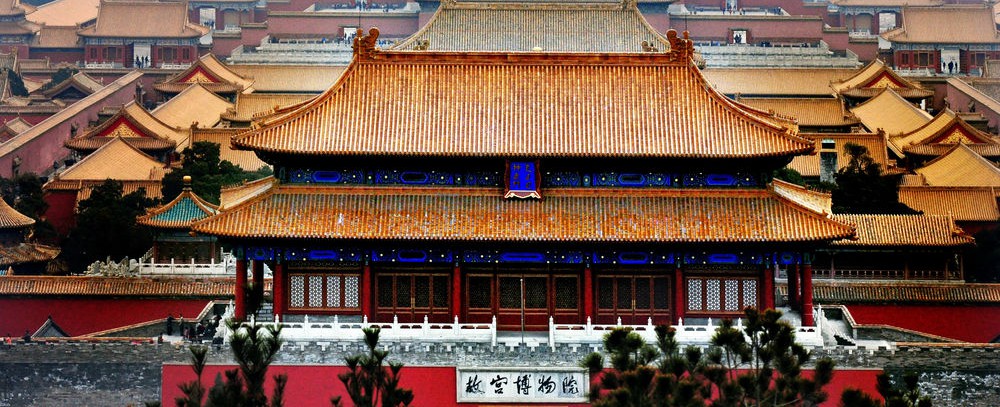
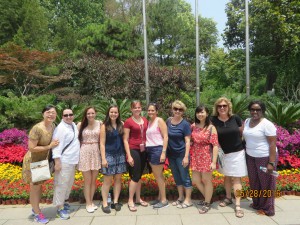

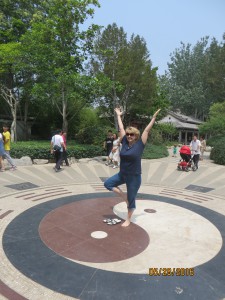

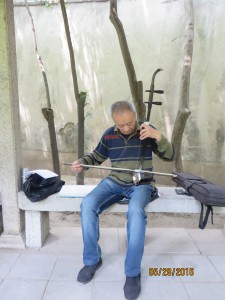
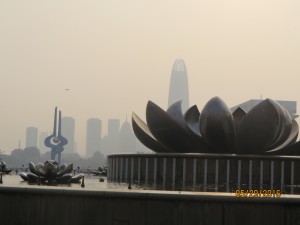

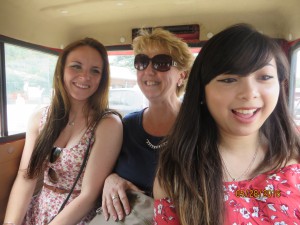

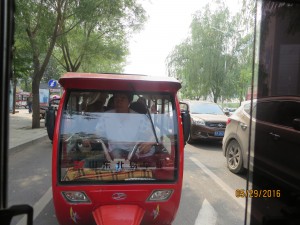
 N. Prior to that, I was a medic in the USAF. In 2009 I was deployed to Bagram Air Field, Afghanistan where I worked in an ICU step down unit for seven months. It was a unique experience there as there were so many different kinds of people being treated– most of them heavy trauma patients but many humanitarian cases including correction of cleft palates and other facial deformities in children. Shortly thereafter, I went to Joint Base Balad, Iraq for 6 months where I performed Contingency Aeromedical Staging Facility Command and Control- but just call me C2– I helped the injured guys (and one lady) get home, by far one of the most rewarding things I have ever done. After that, I have gone on several small trips abroad including one, teaching urban search and rescue and patient trauma assessment to “baby” El Salvadoran Special Forces troops. Currently, I live with my family in NH and we raise chickens, ducks, pigs, turkeys and have five “rescued” cats and a retired racing Greyhound. That’s me in a nutshell. My next post will have lots of pictures!
N. Prior to that, I was a medic in the USAF. In 2009 I was deployed to Bagram Air Field, Afghanistan where I worked in an ICU step down unit for seven months. It was a unique experience there as there were so many different kinds of people being treated– most of them heavy trauma patients but many humanitarian cases including correction of cleft palates and other facial deformities in children. Shortly thereafter, I went to Joint Base Balad, Iraq for 6 months where I performed Contingency Aeromedical Staging Facility Command and Control- but just call me C2– I helped the injured guys (and one lady) get home, by far one of the most rewarding things I have ever done. After that, I have gone on several small trips abroad including one, teaching urban search and rescue and patient trauma assessment to “baby” El Salvadoran Special Forces troops. Currently, I live with my family in NH and we raise chickens, ducks, pigs, turkeys and have five “rescued” cats and a retired racing Greyhound. That’s me in a nutshell. My next post will have lots of pictures!
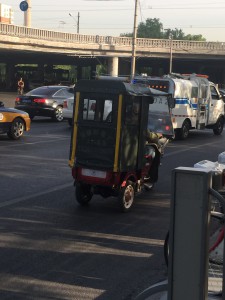
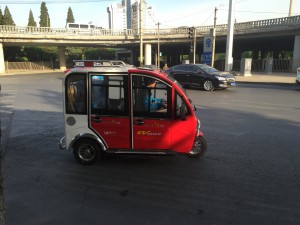

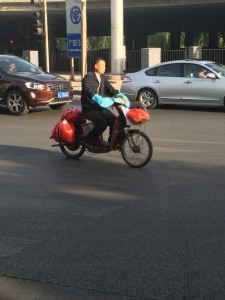
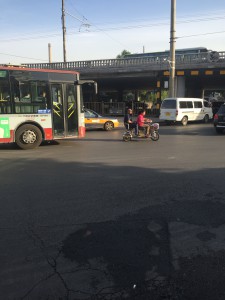
 My fellow travelers are going to do a BLOG entry about some of our adventures today. For those of you who have read my UML BLOGs before I like to write about my observations. Well, this morning I got up early and went for a walk ( totally forgetting that I was scheduled to climb the Great Wall of China later today.. Needless to say my Fitbit recorded lots of steps). What I wanted to share with you all today was my early observations about transportation in and around the city. I am fascinated to explore the patterns of society in new places for me. Today was no exception. Beijing at first glance could be like any other big US city. Filled with skyscrapers, paved roads, bridges, cars, buses and people all moving to make it to home or work. The mode of transportation just looks a bit different in some cases. Yes, they have the assortment of shiny new cars like Kia, Toyota, Hyndai and an occasional American car but it is the movement of the non-car people that have me mesmerized this morning. I am told that there is a lottery for license plates in China due to the overcrowding of the streets so that even if you can afford a car you might not be able to register it and drive it unless you have a license plate. So many people resort to other “wheels” to get around. I saw so many different vehicles and regular people just trying to get to work. A sanitation worker near her small scooter wearing her face mask to protect her against the air pollution and sun. Mother’s riding motorized scooters with their child eating breakfast on the back of the scooter ( no helmet), peddle bikes with 2 or more people riding to work, small “toy” vans barely big enough for a driver but a passenger in the back. A man on a motorized bike with his wife in the back, another man in a motorized scooter with 2 other workers in heading to work. I even saw a women in a motorized wheelchair playing “chicken” with big buses and cars in a busy rotary. Many of the motorcycle drivers wear mitts on their hands that look like oven mitts. They are for warmth in the winter and in the summer they protect the hands from sun. Interesting that they are worried about sun damage but not worried about head injuries.
My fellow travelers are going to do a BLOG entry about some of our adventures today. For those of you who have read my UML BLOGs before I like to write about my observations. Well, this morning I got up early and went for a walk ( totally forgetting that I was scheduled to climb the Great Wall of China later today.. Needless to say my Fitbit recorded lots of steps). What I wanted to share with you all today was my early observations about transportation in and around the city. I am fascinated to explore the patterns of society in new places for me. Today was no exception. Beijing at first glance could be like any other big US city. Filled with skyscrapers, paved roads, bridges, cars, buses and people all moving to make it to home or work. The mode of transportation just looks a bit different in some cases. Yes, they have the assortment of shiny new cars like Kia, Toyota, Hyndai and an occasional American car but it is the movement of the non-car people that have me mesmerized this morning. I am told that there is a lottery for license plates in China due to the overcrowding of the streets so that even if you can afford a car you might not be able to register it and drive it unless you have a license plate. So many people resort to other “wheels” to get around. I saw so many different vehicles and regular people just trying to get to work. A sanitation worker near her small scooter wearing her face mask to protect her against the air pollution and sun. Mother’s riding motorized scooters with their child eating breakfast on the back of the scooter ( no helmet), peddle bikes with 2 or more people riding to work, small “toy” vans barely big enough for a driver but a passenger in the back. A man on a motorized bike with his wife in the back, another man in a motorized scooter with 2 other workers in heading to work. I even saw a women in a motorized wheelchair playing “chicken” with big buses and cars in a busy rotary. Many of the motorcycle drivers wear mitts on their hands that look like oven mitts. They are for warmth in the winter and in the summer they protect the hands from sun. Interesting that they are worried about sun damage but not worried about head injuries.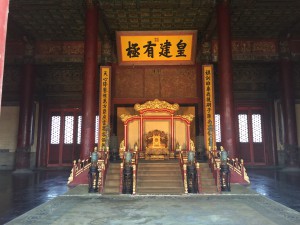

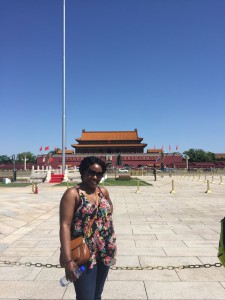
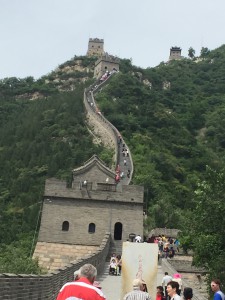 Two days of touring Beijing and learning lots about Chinese culture and history, Toured Tiananmen square, the Forbidden City, the palace museum, the Olympic Stadium and the most impressive Great Wall of China. Our bodies are aching yet we feel very accomplished. The experience was worth all the pain and sweat!
Two days of touring Beijing and learning lots about Chinese culture and history, Toured Tiananmen square, the Forbidden City, the palace museum, the Olympic Stadium and the most impressive Great Wall of China. Our bodies are aching yet we feel very accomplished. The experience was worth all the pain and sweat!

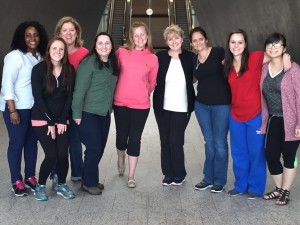
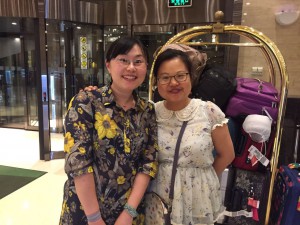
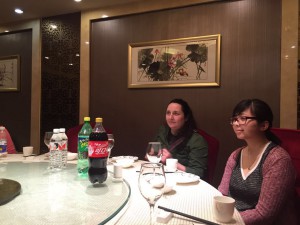

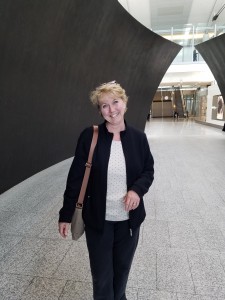 My name is Nadine Burke and I have been a nurse for twenty plus years however just recently earned my BS degree at UMASS Lowell. I began taking classes for this degree 5 years ago and never in my wildest dreams thought this journey would lead to learning about global healthcare during a trip to China. I have always been an advocate for eastern medicine and it’s holistic approach to health. I am so excited to learn more about traditional Chinese medicine and the Chinese culture while visiting this intriguing country!
My name is Nadine Burke and I have been a nurse for twenty plus years however just recently earned my BS degree at UMASS Lowell. I began taking classes for this degree 5 years ago and never in my wildest dreams thought this journey would lead to learning about global healthcare during a trip to China. I have always been an advocate for eastern medicine and it’s holistic approach to health. I am so excited to learn more about traditional Chinese medicine and the Chinese culture while visiting this intriguing country!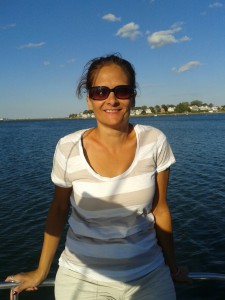 Hi Everyone. My name is Barbara Smith and I work as a nurse in a small community hospital. When I enrolled in the RN-BS program I never thought I would be given such a wonderful opportunity to travel to another country. Throughout my career I have learned many new things, met and taken care of many people from different cultures and backgrounds. I consider myself lucky to be part of a this group of students and professors travelling to China. I have never travelled outside the US so this will be the first time for me. As you can see, I am thrilled to be part of this trip and look forward to embracing all that China has to offer. Not only will I have the opportunity to grow as a nurse, I will experience China’s culture and beauty as well as health care system. I am extremely excited to visit acute care facilities and universities to compare our system versus China’s. I’m excited to share our photos and experiences we are about to embark upon. To my co-student and professors…we will see each other soon.
Hi Everyone. My name is Barbara Smith and I work as a nurse in a small community hospital. When I enrolled in the RN-BS program I never thought I would be given such a wonderful opportunity to travel to another country. Throughout my career I have learned many new things, met and taken care of many people from different cultures and backgrounds. I consider myself lucky to be part of a this group of students and professors travelling to China. I have never travelled outside the US so this will be the first time for me. As you can see, I am thrilled to be part of this trip and look forward to embracing all that China has to offer. Not only will I have the opportunity to grow as a nurse, I will experience China’s culture and beauty as well as health care system. I am extremely excited to visit acute care facilities and universities to compare our system versus China’s. I’m excited to share our photos and experiences we are about to embark upon. To my co-student and professors…we will see each other soon.